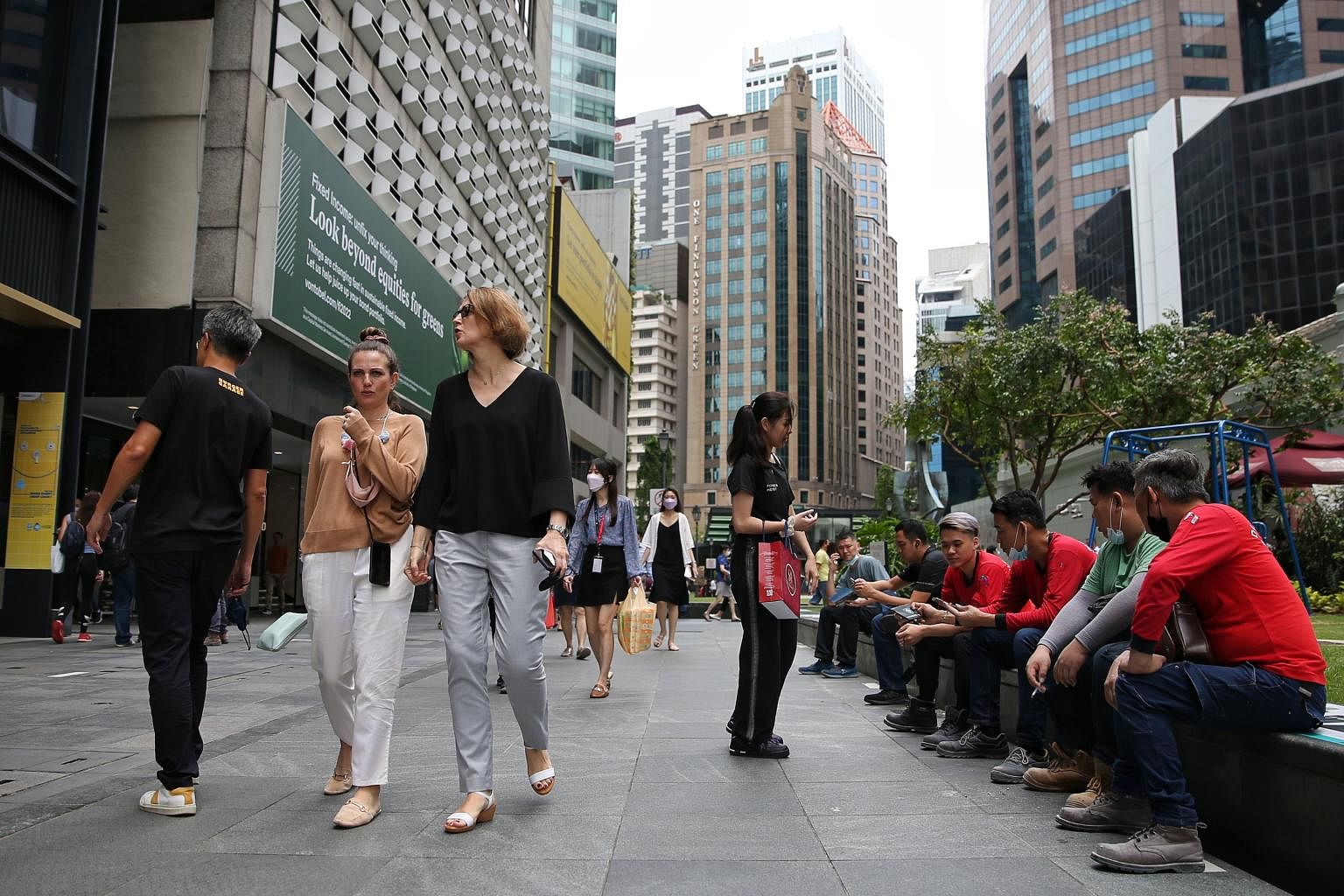Employers move to tackle labour crunch as border curbs ease
Sign up now: Get ST's newsletters delivered to your inbox

Hiring of non-resident workers formed the bulk of Singapore's total employment growth in the first quarter.
ST PHOTO: FELINE LIM
Calvin Yang
Follow topic:
SINGAPORE - Faced with a manpower crunch, employers are stepping up their hiring of foreign labour in the construction sector as Singapore peels back Covid-19 border curbs.
Non-resident employment picked up pace in the first quarter of this year, mainly driven by the hiring of work permit holders in the construction sector, according to advance estimates released by the Ministry of Manpower (MOM) on Thursday (April 28).
The ministry said this hiring of non-resident workers formed the bulk of Singapore's total employment growth in the first quarter.
"With the progressive lifting of border restrictions, the increase in non-resident employment was significantly greater than that of resident employment, as employers replenished their non-resident workforce," it added.
Overall, Singapore's labour market continued its recovery in the first quarter, with total employment - excluding migrant domestic workers - expanding by 41,100.
While this was slightly lower than the fourth quarter of last year, where total employment grew by 47,900, MOM said there remains "a robust pace of growth".
For resident employment, trends were mixed across sectors.
Outward-oriented sectors registered steady resident employment growth. Information and communications, for instance, saw strong demand for IT and digital solutions, while growth in the financial services was in part driven by activities such as security dealing and payments processing.
In contrast, resident employment declined in domestic-facing sectors such as food and beverage services, retail trade and accommodation, highlighted the report. These sectors typically observe employment declines following seasonal hiring for the year-end festive period in the fourth quarter.
Meanwhile, unemployment figures held steady last month, after returning to pre-Covid-19 levels in February.
The overall unemployment rate edged up slightly to 2.2 per cent last month, from 2.1 in February. However, the resident unemployment rate remained unchanged at 3 per cent, as did the citizen unemployment rate, at 3.2 per cent.
The report also showed that retrenchments hit a record low of 1,300 - or 0.6 retrenched per 1,000 employees - in the first quarter, amid a tight labour market.
Employers attributed most of the retrenchments to reorganisation or restructuring efforts, said MOM.
More details will be shared in the fuller first quarter report in June.
In the coming months, non-resident employment is expected to continue its recover with the further easing of border measures, said MOM.
Resident employment is likely to see modest growth, while the resident unemployment rate is expected to stay low, it added.
Manpower Minister Tan See Leng said in a Facebook post on Thursday that the economy was expected to continue improving and drive demand for workers.
The significant relaxation of border measures from this month “should alleviate some of the labour market tightness, especially for employers who are more dependent on work permit holders,” he added.
Observers believe hiring is bound to rise even more in the second quarter, especially in the construction, marine shipyard and process sectors, which have had to deal with scarce labour and delayed projects.
Dr David Leong, managing director of PeopleWorldwide Consulting, said: “Where we stand now, the hiring horizon looks promising, and workers must swing back into a new normality.”
However, the downside risks to economic growth have increased due to global economic unpredictability arising from the Russia-Ukraine conflict, protracted supply disruptions, monetary policy tightening in advanced economies, and continued uncertainty over the trajectory of the Covid-19 pandemic, said MOM.
“These factors could affect business sentiments and profitability and, in turn, labour demand,” it added.


